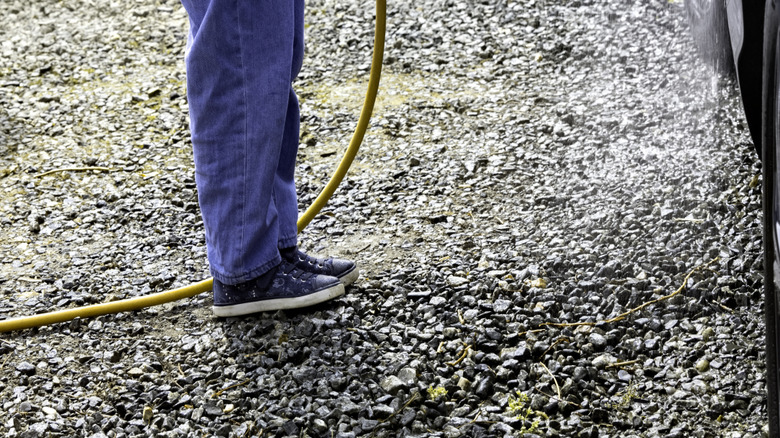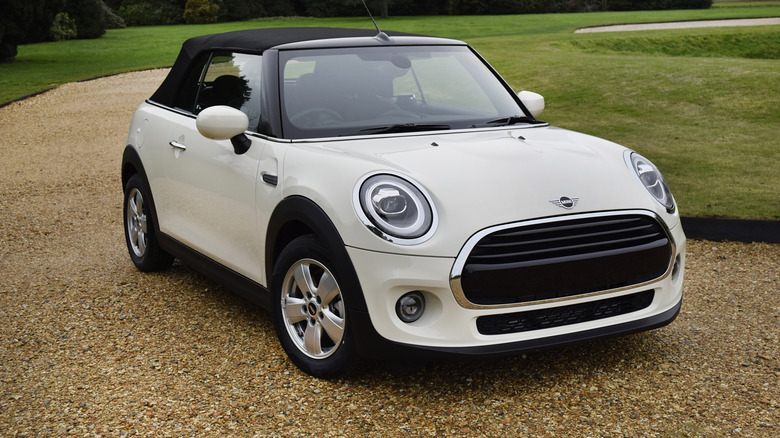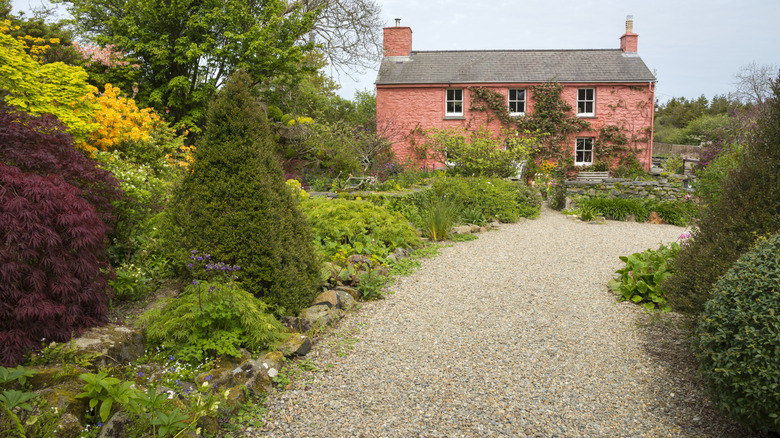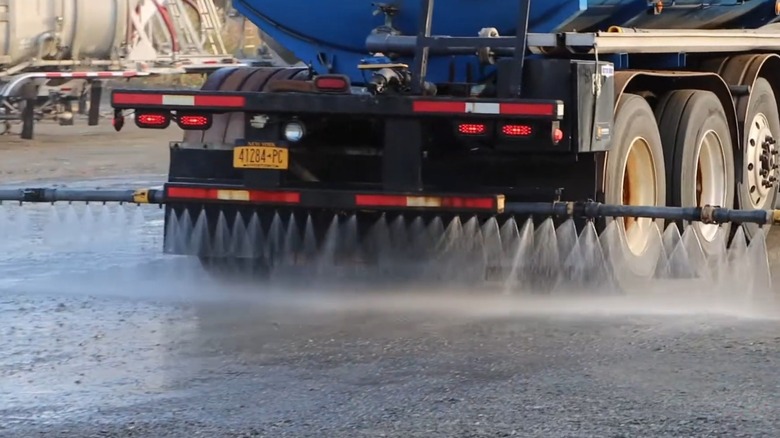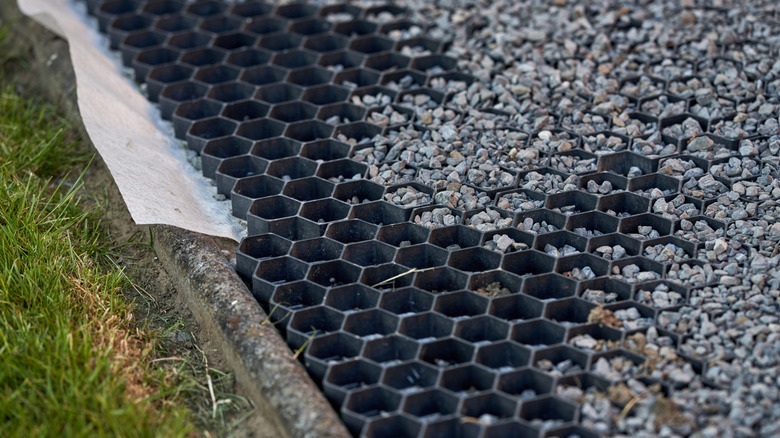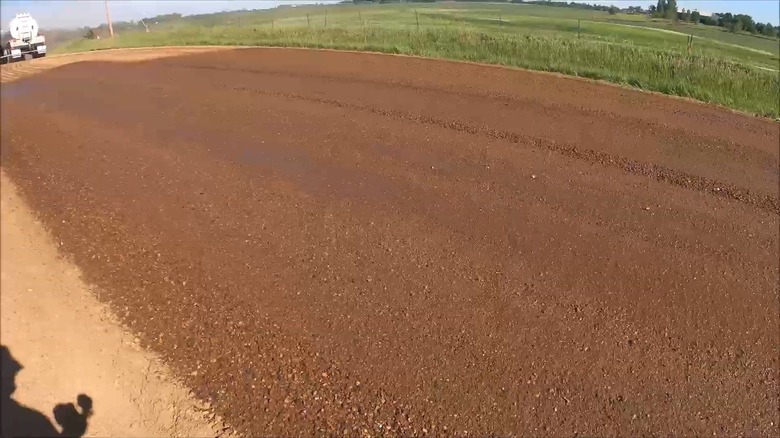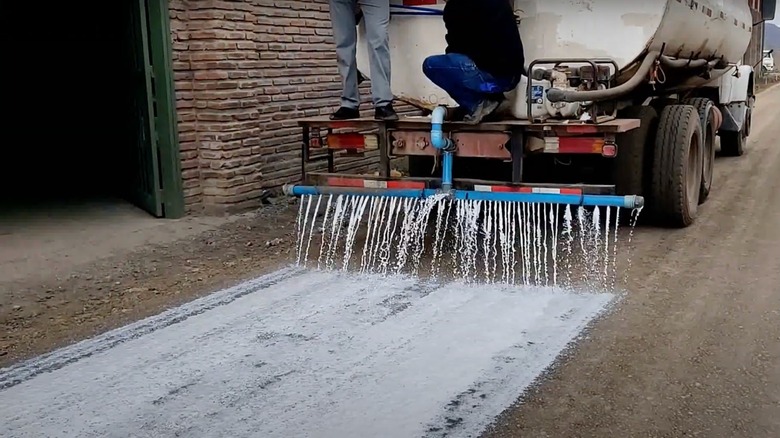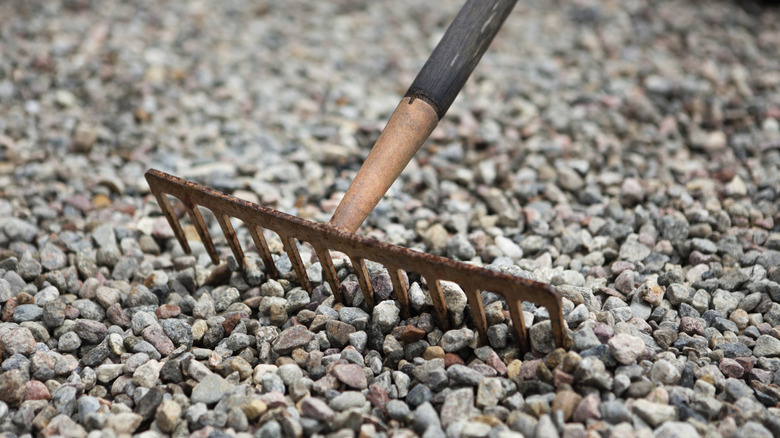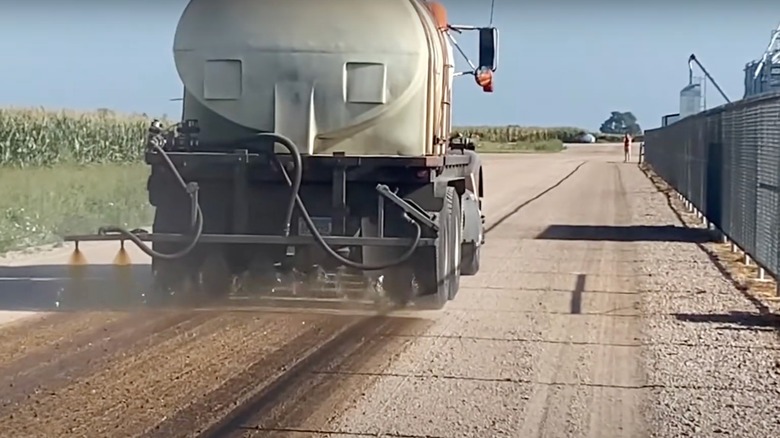10 Ways To Make Your Gravel Driveway Less Dusty
There's no denying the fact that gravel driveways are cost-effective, but you must know their drawbacks as well. For instance, they're difficult to clean and plow snow off of. Plus, you'll have to maintain them regularly, or deal with low sides and unsightly potholes. You'll also have to learn the best way to remove weeds from your gravel driveway since they offer ideal growing conditions for the offensive species. If that weren't enough, these unpaved roads actively produce dust when there's friction between the pieces of gravel and the soil.
Under the best circumstances, this dust will ruin your car's shine and force you to clean it more regularly or shell out money for automated washes. At the worst, it'll negatively impact your health, irritate your eyes and make it challenging for you to focus on the road, and cause damage to your automobile. Moreover, dust buildup on your property's exterior will lower its aesthetic appeal. The problem will be worse in semi-arid or dry regions, as limited rainfall will make it easier for the loose particles to become airborne. Fortunately, there are a few easy ways you can use to make your gravel driveway less dusty. They range from free techniques like controlling the traffic on the unpaved path to slightly expensive pavers and dedicated salts. In case you go the chemical route, always buy an organic solution and don't forget to test it on an inconspicuous area first.
Dampen your gravel driveway
One of the easiest and budget-friendly ways to make your unpaved driveway less dusty is to apply water. This method works because the liquid will make it more difficult for dust particles to become airborne. Simply wet the surface evenly and repeat this action every few days. You can use a hose to cover your modest driveway. However, if you've got a large area to cover or don't want to dampen a small one manually, alter the direction of your sprinklers to take care of the problem.
Reduce your vehicle speed as you drive up your driveway
Although it can be thrilling to put your feet to the pedal and enjoy the wind in your hair, especially if you've got a long driveway, try to rein in your adventurous side. The logic behind this is simple: The more friction your vehicle's tires add to the topsoil, the more it'll kick off dust in retaliation. So, keep your playlist loaded, the "Leisure" poem by W. H. Davies recorded, or a few interesting conversation topics prepared if you have some company and stick to a lower speed limit.
Control the traffic on your gravel driveway
Vehicles moving slowly on your gravel driveway will only help mitigate dust to a certain extent. To minimize dust production, you need to control the traffic moving up and down this stretch of private road. While it may not be possible to ban all vehicles, especially if there's only one entry or exit point, you can motivate your family, friends, and guests to walk shorter distances instead of driving. In case you have a second entry or exit gate and people aren't amenable to walking, encourage them to take the back entrance.
Place a few windbreaks in strategic spots along your driveway
Controlling the traffic on your driveway or lowering your speed limit won't be of much use if there are no windbreaks in place to keep the dust from being blown away. To prevent it from muddying your house's exterior or making its way inside, install a few windbreaks in strategic spots. Popular choices to slow down erosion by wind include fences and berms. In case you want to add a little visual interest and keep the topsoil in place, grow plants in hedges or rows to prettify your gravel path.
Use calcium or magnesium chloride to keep your driveway damp
Chlorides, like calcium and magnesium, are a great way to reduce dust from your unpaved road because they draw in moisture from the atmosphere. This helps your driveway's topsoil to remain damp for longer. Though these hygroscopic salts are more effective than plain water, they have a few downsides. For starters, if you apply the product with a heavy hand and it finds its way to the nearby gardens, it'll hurt the soil, plants, and underground water. Plus, they're only effective in areas with enough humidity in the air.
Permeable pavers are a long-term solution
If you want a more permanent solution to your dusty gravel driveway problem, you might want to consider permeable pavers. Wondering how they'll achieve this feat? Since the pavers are installed on the surface of your topsoil, they'll keep the gravel in place and prevent it from crumbling into a powder when an automobile thunders over them. This, in turn, will lessen the amount of dust generated by your driveway. When the dust production goes down, there will be less of a chance for it to become airborne and dull your car's shine.
Use a dedicated dust suppressant on your unpaved driveway
Another method that will make your unpaved driveway less dusty in the long-term is using dust suppressants. As their name suggests, these dedicated suppressants bind the tiny soil molecules together, effectively diminishing the amount of dust given off by the gravel surface. Keep in mind that these solutions aren't a one-and-done deal. You'll have to apply them at short intervals over years to yield the desired benefits. When buying a dust suppressant, opt for a non-toxic and organic solution, or you might end up hurting the natural environment around your driveway.
Invest in a good quality soil stabilizer
Cousins to dust suppressants, soil stabilizers also assist in dust mitigation. This is because they can lock down the soil and reduce its erosion. Alternatively, others are spread over a gravel surface's topsoil so they can trap the dust underneath. However, conventional options, including cement, lime, polymers, asphalt, and geotextiles, are expensive, bad for the environment, and provide short-term relief. So, choose an organic and enzymatic soil stabilizer to make your unpaved driveway less dusty. It'll fuse clay specks in the soil together and provide a smooth, concrete-esque driveway for years to come.
Fill in the potholes in your unpaved driveway
Potholes in your driveway won't just lead to a bumpy ride, they'll also actively contribute to dust generation. If left untreated, they'll get bigger with time, start holding water (impeding drainage), lead to tire deterioration, and make your driveway look ugly. Luckily, you can fix potholes in a gravel driveway in a few steps. You just need to buy some similar-looking gravel and lay it down in consistent layers. Once you're done, level the surface with a packing tool or drive over the spots to ensure they stay in place.
Apply soybean oil to your gravel driveway
More accurately called the Acidulated Soybean Oil Soapstock, it's derived during the refinement process of soybean oil. Similar to a light petroleum-based oil, you can use it on your gravel driveway to lightly fuse the loose particles together and reduce the production of dust. Besides reducing the amount of dust produced by your driveway, the soapstock is biodegradable and won't harm the nearby vegetation if it runs off. Moreover, it won't harm aquatic life in case it seeps underground or makes its way to a local watering hole.

